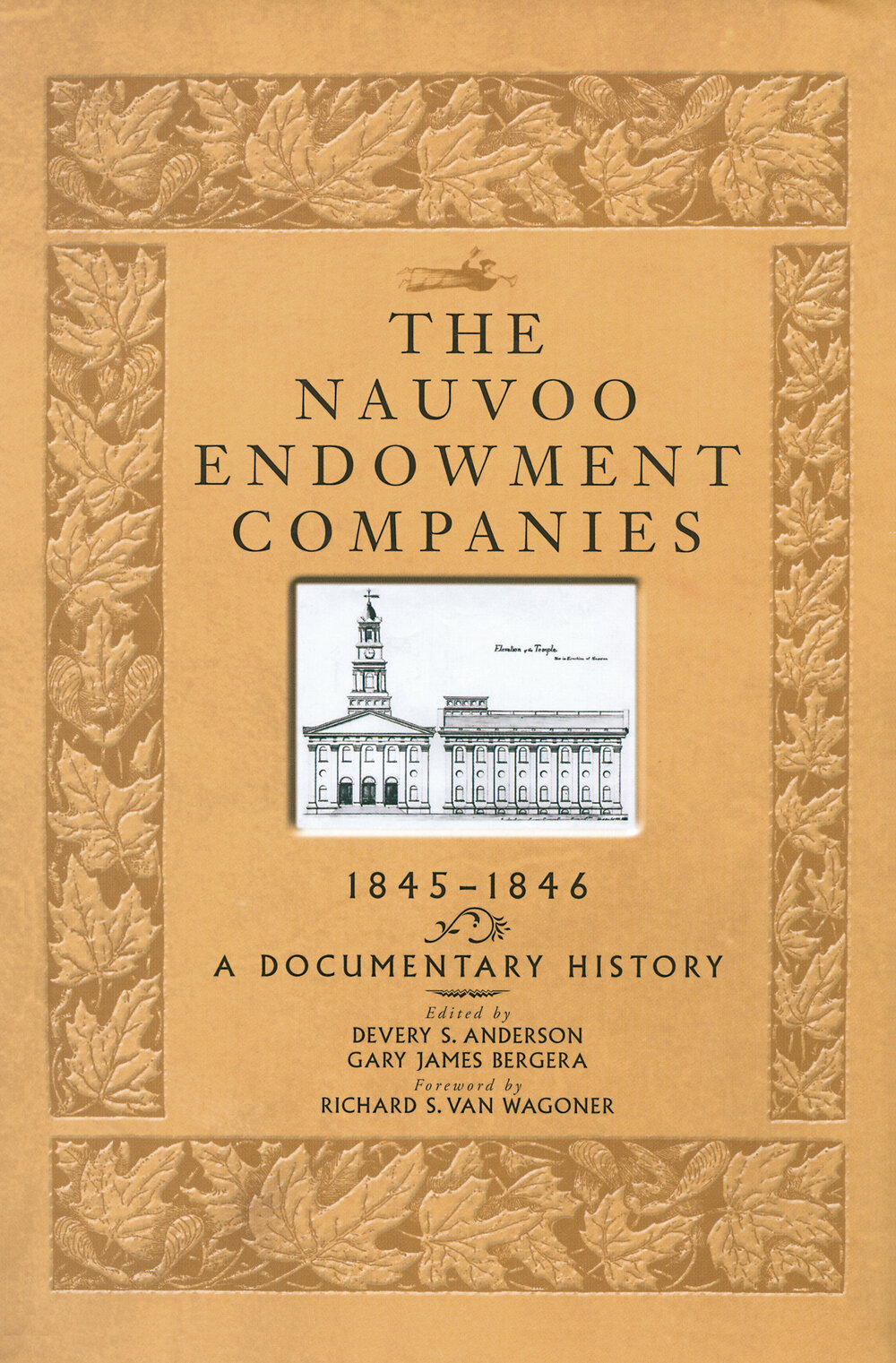Devery S. Anderson and Gary J. Bergera's documentary history of Nauvoo Temple ordinances from 1845 to 1846.
- Type
- Book
- Source
- Devery Anderson LDS
- Hearsay
- ReprintSecondary
- Reference
Devery S. Anderson and Gary J. Bergera, eds., The Nauvoo Endowment Companies, 1845–1846: A Documentary History (Salt Lake City, UT: Signature Books, 2005), dust jacket description
- Scribe/Publisher
- Signature Books
- People
- Devery Anderson, Gary James Bergera
- Audience
- Reading Public
- Transcription
For the two months the Nauvoo Temple was in operation (December 1845–February 1846), scribes carefully documented all activities and events taking place inside, including lectures on the endowment ceremony drama and sealing rituals. Their narratives begin with the lighting of fires and hauling of water each morning at 3:00 a.m. (many ordinance workers slept overnight in the temple) to late-night celebratory dancing (“We danced unto the Lord,” Brigham Young explained) and Sunday sermons delivered to the recently endowed.
Historians, biographers, and genealogists will find the names and dates of the initiates and documentation of sealings (including polygamous unions) to be of significance. Others will turn to the narrative portions of the records, including first-person accounts and minutes of meetings. For instance, as women cleaned the ceremonial robes for the next day’s endowment “companies” (or sessions), church officials would read from John C. Fremont’s published journal, anticipating their imminent exodus from Nauvoo for the Great Basin.
The sources extracted in this companion volume to Joseph Smith’s Quorum of the Anointed and The Development of LDS Temple Worship, include original temple ledger books and summaries of data compiled by early church scribes, including the “Book of Anointings”; “Book of Adoptions”; “Book of Proxey [sic]”; “General Record of the Seventies, Book B”; and William Clayton’s diary kept for Heber C. Kimball; as well as diary entries from Thomas Bullock, William Hyde, George Laub, Newel Knight, Franklin D. Richards, Abraham Owen Smoot, Erastus Snow, Hosea Stout, and others; and the autobiographies of Harrison Burgess, Rhoda Ann Fullmer, Joseph Holbrook, Joseph Hovey, Norton Jacob, Noah Packard, George Albert Smith, John Spiers, Nancy Ann Wilson, and others.
As scribes dutifully noted the peace, harmony, and order prevailing in the Nauvoo Temple during the closing months of 1845 and early months of 1846, the panic in their reports regarding the savage murders of Latter-day Saints in outlying areas and subsequent retaliation by church members was equally palpable. Guards were stationed at virtually every temple door, inside and out, to prevent attacks. Marshals periodically searched the temple interior for church leaders accused of counterfeiting. The odors of scented oil and fresh paint mixed with the sweat and smells of a frontier boomtown.
Such were the contradictions of this stressful time for Latter-day Saints. As the faithful covenanted within the temple to obey the laws of the land, church authorities evaded arrest by using body-doubles and other ruses to circumvent local law enforcement. Initiates pledged fidelity to their lawfully wedded spouses, then—sometimes within minutes—were sealed for time and eternity to additional wives. While the temple ceremony encouraged reverence and decorum, Brigham Young complained that church members sometimes peeked through partitions to observe others being endowed; and when evening came, Young himself led in dancing to live music in the Celestial Room. Vowing to live Christian lives, temple endowees were nonetheless asked to swear vengeance against the murderers of Joseph and Hyrum Smith.
Women were elevated to the status of queens and priestesses but were told to remember their place as subservient helpmeets to their husbands. In Sunday sermons, Brigham Young explained that the purpose of temple rites was to teach men the important lesson of the Garden of Eden, that “Adam, being full of integrity and not disposed to follow the woman nor listen to her, was permitted to receive the . . . priesthood.” Apostle George A. Smith agreed that “the woman ought to be in subjection to the man”; and Elder Heber C. Kimball added that some priesthood holders had “apostatized, being led by their wives; and if any such cases occur again, no more women will be admitted” to the temple.
In other words, it was a complex time as issues of women’s equality and Christian forbearance—themes central to the temple experience—struggled against competing demands for loyalty and obedience. Yet from the furnace of crisis can emerge the highest ideals of commitment and faith.
- Citations in Mormonr Qnas
The B. H. Roberts Foundation is not owned by, operated by, or affiliated with the Church of Jesus Christ of Latter-day Saints.

